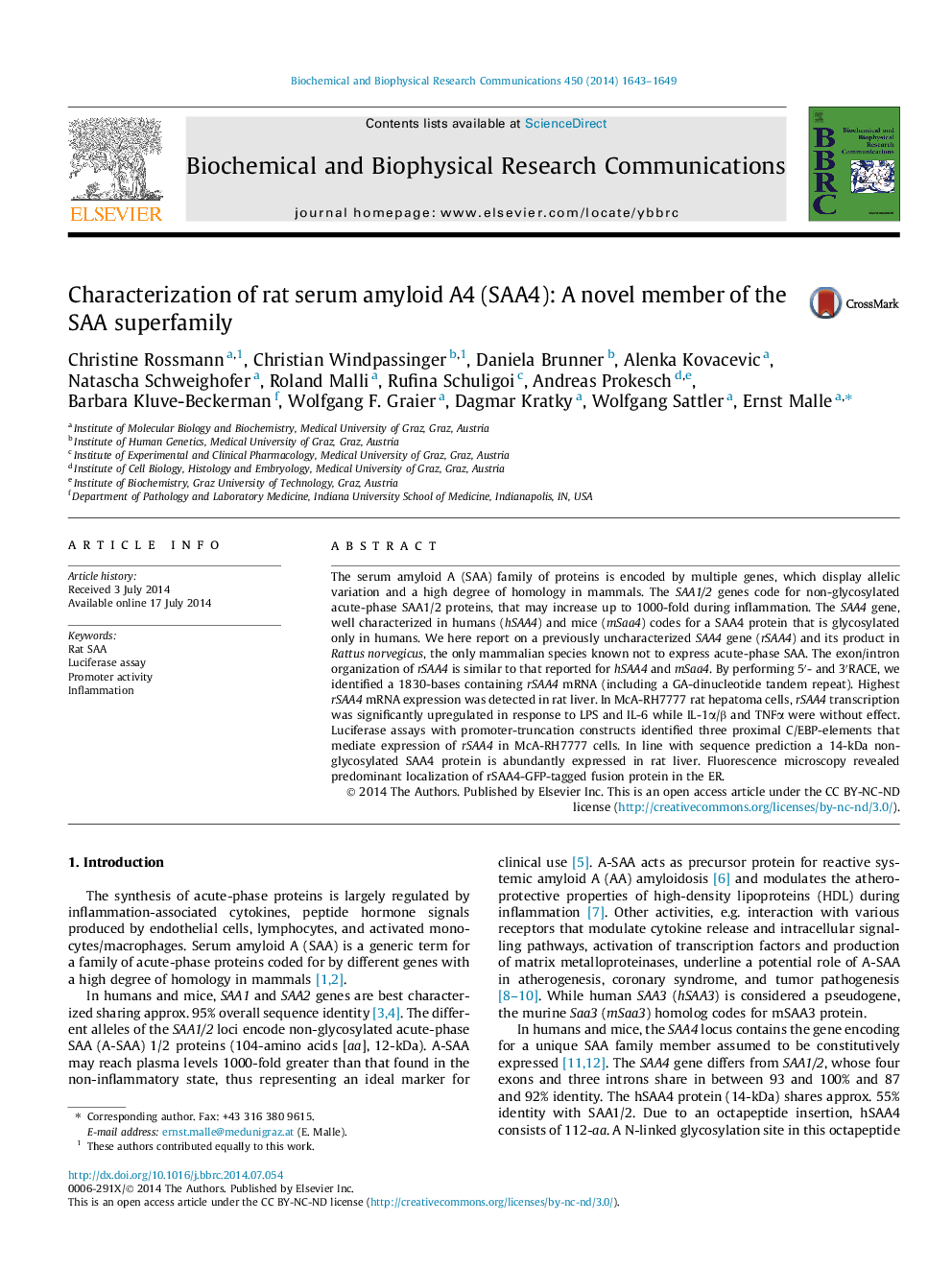| Article ID | Journal | Published Year | Pages | File Type |
|---|---|---|---|---|
| 8297555 | Biochemical and Biophysical Research Communications | 2014 | 7 Pages |
Abstract
The serum amyloid A (SAA) family of proteins is encoded by multiple genes, which display allelic variation and a high degree of homology in mammals. The SAA1/2 genes code for non-glycosylated acute-phase SAA1/2 proteins, that may increase up to 1000-fold during inflammation. The SAA4 gene, well characterized in humans (hSAA4) and mice (mSaa4) codes for a SAA4 protein that is glycosylated only in humans. We here report on a previously uncharacterized SAA4 gene (rSAA4) and its product in Rattus norvegicus, the only mammalian species known not to express acute-phase SAA. The exon/intron organization of rSAA4 is similar to that reported for hSAA4 and mSaa4. By performing 5â²- and 3â²RACE, we identified a 1830-bases containing rSAA4 mRNA (including a GA-dinucleotide tandem repeat). Highest rSAA4 mRNA expression was detected in rat liver. In McA-RH7777 rat hepatoma cells, rSAA4 transcription was significantly upregulated in response to LPS and IL-6 while IL-1α/β and TNFα were without effect. Luciferase assays with promoter-truncation constructs identified three proximal C/EBP-elements that mediate expression of rSAA4 in McA-RH7777 cells. In line with sequence prediction a 14-kDa non-glycosylated SAA4 protein is abundantly expressed in rat liver. Fluorescence microscopy revealed predominant localization of rSAA4-GFP-tagged fusion protein in the ER.
Related Topics
Life Sciences
Biochemistry, Genetics and Molecular Biology
Biochemistry
Authors
Christine Rossmann, Christian Windpassinger, Daniela Brunner, Alenka Kovacevic, Natascha Schweighofer, Roland Malli, Rufina Schuligoi, Andreas Prokesch, Barbara Kluve-Beckerman, Wolfgang F. Graier, Dagmar Kratky, Wolfgang Sattler, Ernst Malle,
